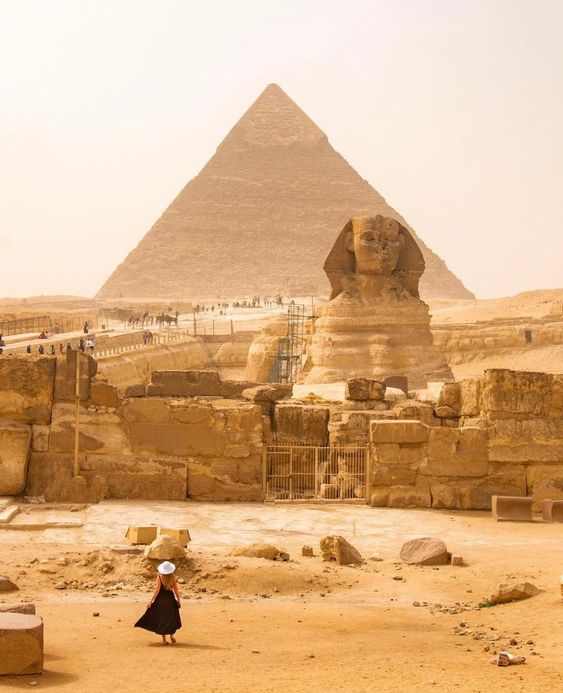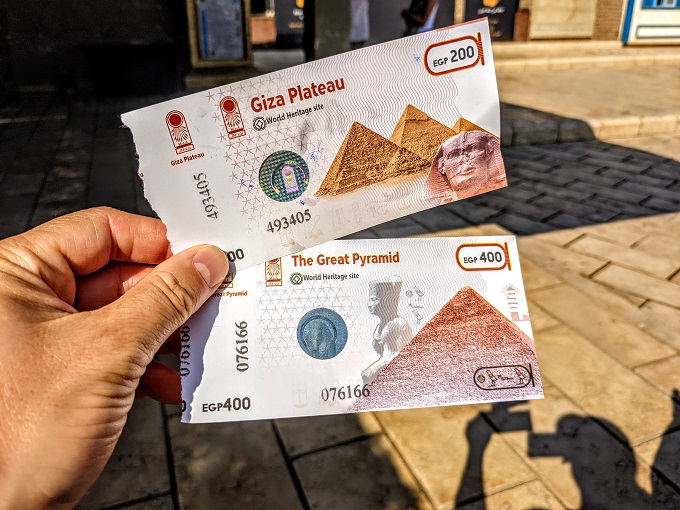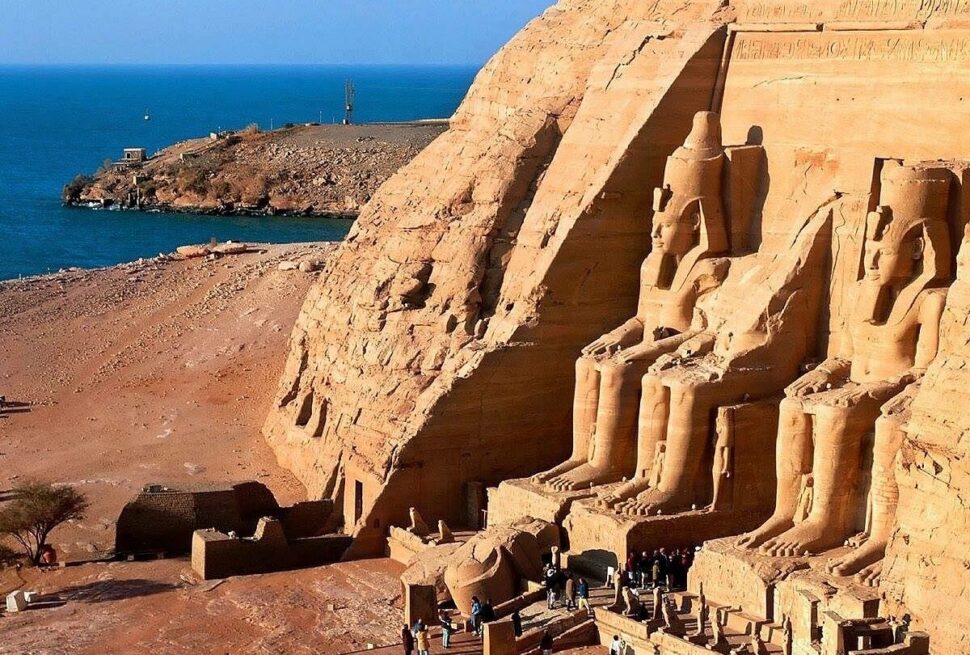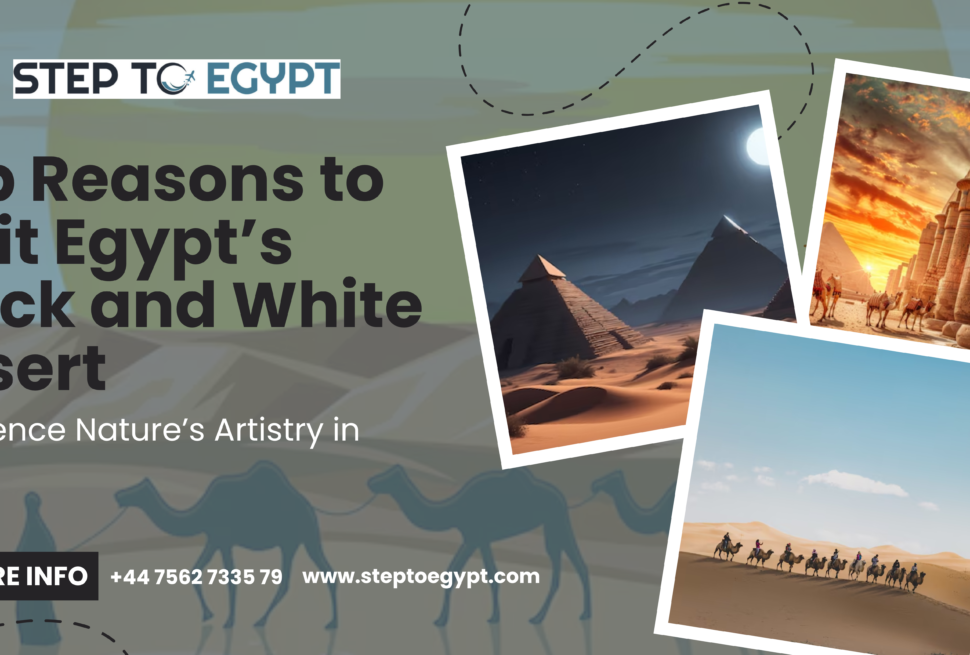Imagine standing in front of a colossal structure that rises from the desert sand, towering over you with its majestic shape and size. You feel a sense of awe and wonder as you gaze at the ancient monument that has survived for thousands of years, defying time and decay. You are looking at one of the pyramids of Giza, the oldest and most famous of the seven wonders of the ancient world.
The pyramids of Giza are more than just impressive buildings. They are the legacy of a remarkable civilization that flourished in the Nile Valley for millennia, creating a rich and diverse culture that influenced the world. They are also the source of mystery and intrigue, sparking the curiosity and imagination of generations of explorers, scholars, and adventurers. They are also the epitome of beauty and art, reflecting the vision and values of the ancient Egyptians who built them.
In this blog post, we will take you on a journey to discover the secrets and stories behind the pyramids of Giza. We will answer some of the most fascinating questions about these ancient wonders, such as:
- How were the pyramids built and what challenges did the builders face?
- How did the ancient Egyptians use mathematics, astronomy, and engineering to design and align the pyramids?
- What was the role of the pharaohs, the workers, and the priests in the construction process?
- What are the different types of pyramids and how do they compare and contrast?
- What are the myths and legends surrounding the pyramids and what do they reveal about the ancient Egyptian beliefs and culture?
- What are the alternative explanations for the pyramids and how credible and plausible are they?
- What are the latest research and discoveries that shed more light on the pyramids and their secrets?
By the end of this blog post, you will have a deeper and broader understanding of the pyramids of Giza and their significance as wonders of the ancient world. You will also have some suggestions and tips on how to learn more or visit the pyramids yourself. So, let’s get started!

The Construction of The pyramids of Giza
One of the most common and intriguing questions about the pyramids is how they were built. The pyramids of Giza are among the largest and most complex structures ever constructed by humans, requiring enormous amounts of manpower, materials, and time. The largest and oldest of the three pyramids, the Great Pyramid of Khufu, covers an area of 13 acres and stands at 146 meters high. It is estimated that it took about 20 years and 2.3 million blocks of limestone and granite, each weighing an average of 2.5 tons, to build it.
The ancient Egyptians did not have the modern tools and machines that we have today, such as cranes, trucks, or bulldozers. They had to rely on simple and ingenious methods to transport, lift, and place the massive stones that formed the pyramids. Some of the methods they used include:
- Dragging the stones on wooden sledges over ramps or rollers made of logs, clay, or stone.
- Using levers, ropes, and wooden poles to tilt and maneuver the stones into position.
- Employing boats and barges to transport the stones along the Nile River from the quarries to the construction site.
- Aligning the stones with precision and accuracy using plumb lines, levels, and measuring rods.
The ancient Egyptians also used mathematics, astronomy, and engineering to design and align the pyramids. They had a sophisticated knowledge of geometry, arithmetic, and fractions, which they used to calculate the dimensions, angles, and slopes of the pyramids. They also had a keen observation of the stars, the sun, and the seasons, which they used to orient the pyramids to the cardinal points and the solstices. They also had a remarkable skill of engineering, which they used to create internal chambers, corridors, and ventilation shafts within the pyramids.
The construction of the pyramids was not only a technical feat, but also a social and religious one. The pyramids were built by the order and under the supervision of the pharaohs, the kings of ancient Egypt who were considered to be divine and immortal. The pharaohs commissioned the pyramids as their tombs, where they would be buried with their treasures and belongings, and where they would ascend to the afterlife and join the gods. The pyramids were also monuments of the pharaohs’ power and glory, showcasing their achievements and authority to their subjects and enemies.
The workers who built the pyramids were not slaves, as some people might think, but rather skilled and organized laborers who were paid and fed by the state. They came from different regions and professions, such as farmers, craftsmen, and scribes. They worked in teams and shifts, following the instructions and plans of the architects and overseers. They also had their own camps and villages near the pyramids, where they lived and rested.
The priests were also involved in the construction of the pyramids, as they performed rituals and ceremonies to bless and protect the work and the workers. They also oversaw the mummification and burial of the pharaohs and their families, as well as the sealing and guarding of the pyramids.
The pyramids of Giza are not the only pyramids that the ancient Egyptians built. In fact, there are more than 100 pyramids scattered across Egypt, dating from different periods and dynasties. The pyramids also vary in shape, size, and style, depending on the preferences and innovations of the builders. Some of the different types of pyramids include:
- The step pyramids, which are the oldest and simplest type of pyramids, consisting of several layers of rectangular platforms stacked on top of each other. The first and most famous step pyramid is the Pyramid of Djoser, built by the architect Imhotep in the 27th century BC.
- The bent pyramids, which are transitional and experimental type of pyramids, having two different angles of inclination. The lower part of the pyramid is steeper, while the upper part is flatter. The most famous bent pyramid is the Pyramid of Sneferu, built in the 26th century BC.
- The true pyramids, which are the most common and classic type of pyramids, having a square base and four smooth triangular faces that meet at a point. The most famous true pyramids are the Pyramids of Giza, built by Khufu, Khafre, and Menkaure in the 25th century BC.
The Mystery of The pyramids of Giza
Another common and intriguing question about the pyramids is why they were built and what secrets they hide. The pyramids of Giza have been the subject of many myths and legends, as well as alternative explanations, that attempt to reveal the mysteries and meanings behind these ancient wonders. Some of these stories and theories include:
- The curse of the pharaohs: The belief that anyone who disturbs the tombs of the pharaohs will suffer misfortune, illness, or death. This legend was popularized by the media and the public after the discovery and opening of the tomb of Tutankhamun in 1922, which was followed by several deaths and accidents among the explorers and their associates.
- The hidden chambers: The speculation that there are undiscovered rooms and passages within the pyramids, containing more treasures, secrets, or mysteries. This theory was fueled by the use of modern technologies, such as radar and robots, that detected anomalies and voids inside the pyramids, such as the so-called Queen’s Chamber and the Grand Gallery in the Great Pyramid of Khufu.
- The lost treasures: The assumption that there are still valuable and precious items buried with the pharaohs inside the pyramids, such as gold, jewels, statues, or artifacts. This assumption was based on the findings of some of the pyramids that were not completely looted or robbed, such as the Pyramid of Unas, which contained hieroglyphic texts and carvings, or the Pyramid of Teti, which contained a sarcophagus and a mummy.
- The alien intervention: The hypothesis that the pyramids were built by or with the help of extraterrestrial beings, who visited the earth in ancient times and shared their advanced knowledge and technology with the ancient Egyptians. This hypothesis was proposed by some authors and researchers, such as Erich von Däniken and Graham Hancock, who claimed that the pyramids show evidence of alien influence, such as the precise alignment, the complex design, or the resemblance to other ancient structures around the world.
- The advanced civilization: The conjecture that the pyramids were built by or with the legacy of a lost and ancient civilization, that existed before the recorded history and that possessed a high level of culture and technology. This conjecture was suggested by some scholars and historians, such as John Anthony West and Robert Bauval, who argued that the pyramids show signs of a prehistoric origin, such as the erosion, the symbolism, or the correlation to the stars.
- The biblical connection: The correlation that the pyramids have a link or a reference to the events and characters of the Bible, the holy book of Judaism and Christianity. This correlation was made by some believers and theologians, such as Joseph Seiss and Charles Piazzi Smyth, who asserted that the pyramids contain a prophetic message, a divine plan, or a sacred code, related to the creation, the flood, or the end times.
These stories and theories are fascinating and intriguing, but they are not necessarily true or reliable. They are often based on assumptions, speculations, or interpretations, rather than on facts, evidence, or logic.
The Beauty of the Pyramids
The pyramids of Giza are not only impressive and mysterious, but also beautiful and artistic. They are the expression of the ancient Egyptian aesthetic and artistic sense, which valued harmony, symmetry, and proportion. They are also a reflection of the ancient Egyptian worldview and philosophy, which integrated nature, culture, and spirituality.
The pyramids have a unique and elegant shape, which is derived from the ancient Egyptian concept of the benben, a primordial mound that emerged from the waters of chaos at the beginning of creation. The pyramids are also aligned with the four cardinal directions, which represent the order and balance of the universe. The pyramids are also oriented to the sun, which was the main deity and source of life for the ancient Egyptians.
The pyramids have a subtle and sublime color, which is influenced by the natural and artificial materials used to build them. The pyramids are made of limestone and granite, which have different shades of white, gray, and pink. The pyramids were also originally covered with a layer of polished casing stones, which gave them a smooth and shiny surface. The pyramids were also decorated with paint and gold, which added more color and contrast to them.
The pyramids have a rich and diverse decoration, which is inspired by the ancient Egyptian culture and religion. The pyramids are adorned with hieroglyphs, carvings, and statues, which depict the names, titles, and deeds of the pharaohs, as well as the gods, goddesses, and symbols of the ancient Egyptian pantheon. The pyramids also contain paintings, reliefs, and murals, which illustrate the scenes and stories of the ancient Egyptian life, such as the festivals, the rituals, and the afterlife.
The pyramids have also inspired and influenced other cultures and civilizations, who admired and emulated their beauty and art. The pyramids have been visited and studied by many travelers, explorers, and scholars, who recorded and praised their magnificence and splendor. The pyramids have also been imitated and reproduced by many artists, architects, and builders, who created their own versions and variations of the pyramids, such as the Louvre Pyramid in Paris, the Luxor Hotel in Las Vegas, or the Transamerica Pyramid in San Francisco.
The pyramids have also been the source of personal anecdotes and impressions for many people who have seen and experienced them. The pyramids have evoked different emotions and reactions, such as awe, wonder, curiosity, or admiration. The pyramids have also stimulated different thoughts and ideas, such as history, culture, or spirituality. The pyramids have also created different memories and stories, such as adventure, discovery, or inspiration.
Conclusion
The pyramids of Giza are truly wonders of the ancient world, deserving our attention and appreciation. They are the result of the remarkable achievements and innovations of the ancient Egyptians, who built them with skill and ingenuity. They are also the source of the fascinating mysteries and secrets of the ancient Egyptians, who hid them with mystery and intrigue. They are also the expression of the beautiful and artistic vision of the ancient Egyptians, who decorated them with harmony and elegance.
The pyramids of Giza are not only monuments of the past, but also treasures of the present and the future. They are not only tombs of the dead, but also symbols of the living and the eternal. They are not only buildings of stone, but also works of art and wonders of the world.
If you want to learn more about the pyramids of Giza, you can visit some of the following websites and resources:
- The Giza Project, a collaborative research project that aims to document and study the archaeological site of Giza.
- The Pyramids of Giza, a National Geographic article that provides an overview and a gallery of the pyramids of Giza.
- The Secrets of the Great Pyramid, a PBS documentary that explores the latest discoveries and theories about the Great Pyramid of Khufu.
If you want to visit the pyramids of Giza, you can follow some of the following tips and suggestions:
- Plan your trip in advance and book your tickets and accommodation online or through a reputable travel agency.
- Choose the best time and season to visit the pyramids, preferably in the early morning or late afternoon, and avoid the peak hours and the summer heat.
- Hire a licensed and knowledgeable guide or join a reputable tour group, who can provide you with information and assistance during your visit.
- Respect the rules and regulations of the site, such as wearing appropriate clothing, not climbing or touching the pyramids, and not taking flash photography or video inside the pyramids.
- Enjoy the experience and the view, and take plenty of pictures and souvenirs, but also be aware of the potential scams and hassles, such as the touts, the vendors, and the camel drivers.
We hope you enjoyed this blog post and learned something new and interesting about the pyramids of Giza. We also hope you will visit the pyramids someday and see for yourself the wonders of the ancient world. Thank you for reading and have a wonderful day!




